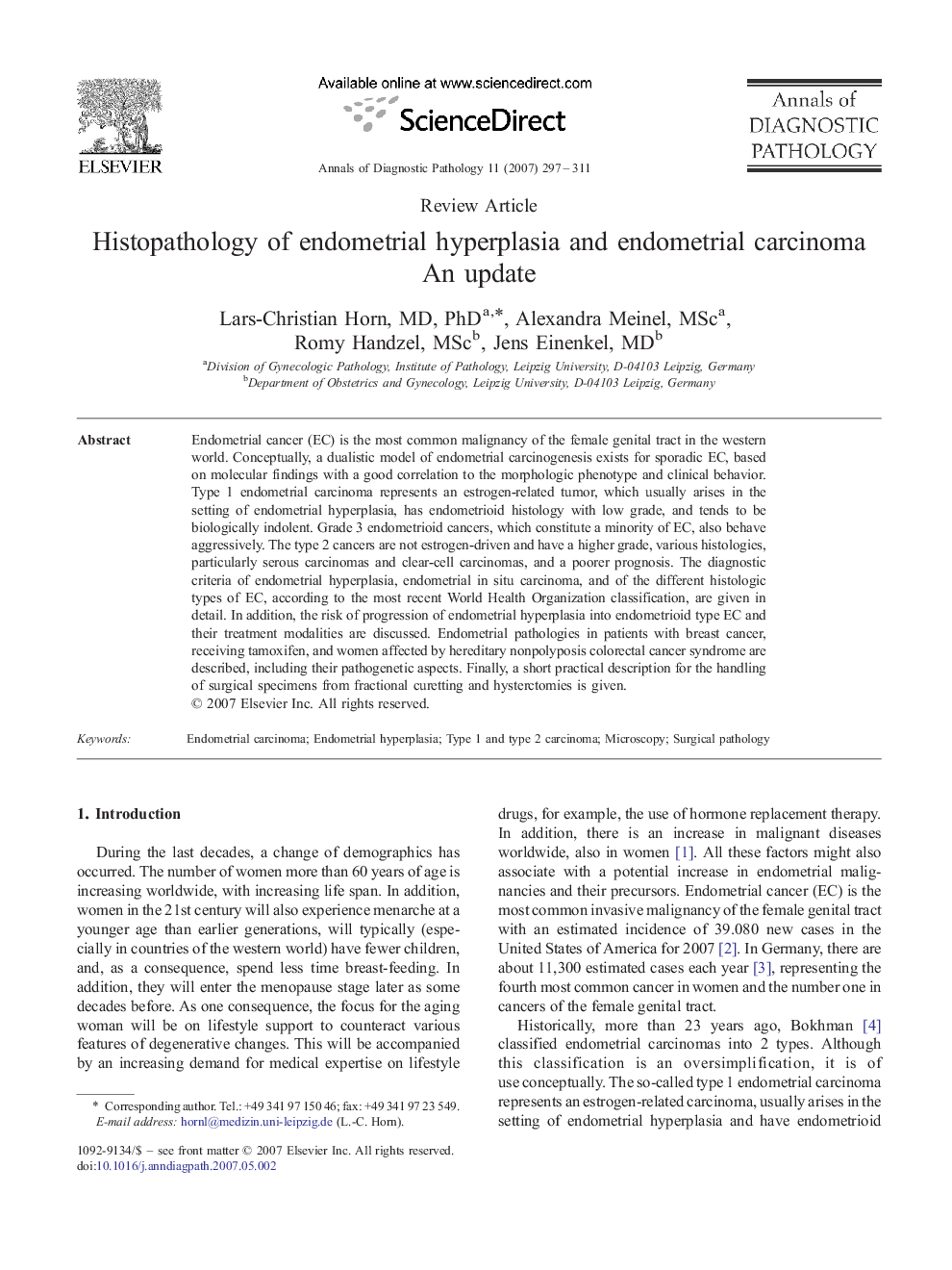| Article ID | Journal | Published Year | Pages | File Type |
|---|---|---|---|---|
| 4130396 | Annals of Diagnostic Pathology | 2007 | 15 Pages |
Endometrial cancer (EC) is the most common malignancy of the female genital tract in the western world. Conceptually, a dualistic model of endometrial carcinogenesis exists for sporadic EC, based on molecular findings with a good correlation to the morphologic phenotype and clinical behavior. Type 1 endometrial carcinoma represents an estrogen-related tumor, which usually arises in the setting of endometrial hyperplasia, has endometrioid histology with low grade, and tends to be biologically indolent. Grade 3 endometrioid cancers, which constitute a minority of EC, also behave aggressively. The type 2 cancers are not estrogen-driven and have a higher grade, various histologies, particularly serous carcinomas and clear-cell carcinomas, and a poorer prognosis. The diagnostic criteria of endometrial hyperplasia, endometrial in situ carcinoma, and of the different histologic types of EC, according to the most recent World Health Organization classification, are given in detail. In addition, the risk of progression of endometrial hyperplasia into endometrioid type EC and their treatment modalities are discussed. Endometrial pathologies in patients with breast cancer, receiving tamoxifen, and women affected by hereditary nonpolyposis colorectal cancer syndrome are described, including their pathogenetic aspects. Finally, a short practical description for the handling of surgical specimens from fractional curetting and hysterctomies is given.
